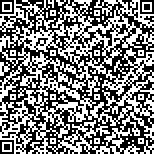| 引用本文: | 徐启渝,王鹏,王涛,舒旺,张华,齐述华.土地利用结构与景观格局对鄱阳湖流域赣江水质的影响.湖泊科学,2020,32(4):1008-1019. DOI:10.18307/2020.0410 |
| XU Qiyu,WANG Peng,WANG Tao,SHU Wang,ZHANG Hua,QI Shuhua.Investigation of the impacts of land use structure and landscape pattern on water quality in the Ganjiang River, Lake Poyang Basin. J. Lake Sci.2020,32(4):1008-1019. DOI:10.18307/2020.0410 |
|
| |
|
|
| 本文已被:浏览 6957次 下载 4925次 |

码上扫一扫! |
|
|
| 土地利用结构与景观格局对鄱阳湖流域赣江水质的影响 |
|
徐启渝1,2, 王鹏1,2, 王涛3, 舒旺1,2, 张华1,2, 齐述华1,2
|
|
1.江西师范大学地理与环境学院, 南昌 330022;2.江西师范大学鄱阳湖湿地与流域研究教育部重点实验室, 南昌 330022;3.贵州省测绘产品质量监督检查站, 贵阳 550054
|
|
| 摘要: |
| 于2015年1月和7月采集赣江干流及支流34个采样点水样,测定电导率、水化学离子、无机氮等水质指标.利用赣江流域2014年30 m分辨率的土地利用数据,以流域景观类型占比表征土地利用结构,景观指数表征景观格局;采用Pearson相关分析、Bioenv分析、Mantle检验与方差分解等方法分析流域土地利用结构与景观格局对赣江水质的影响.结果表明:上游Cl-、Na+浓度最高,中游电导率、Cl-、Na+、K+、Ca2+等水质指标最低,下游电导率、HCO3-、SO42-、Mg2+、Ca2+、NO3--N等水质指标最高.居民建设用地是对水质影响最显著的单一土地利用类型.林地、水田与居民建设用地是对水质影响最显著的土地利用类型组合.平均最近邻体指数是对水质影响最显著的单一景观指数,斑块个数、斑块聚集度指数、平均最近邻体指数是对水质影响最显著的景观指数组合.枯水期土地利用结构和景观格局对水质的贡献率分别为41.1%和17.2%,景观格局对水质的贡献率(17.2%)均为和土地利用结构的交互作用,无独立贡献部分;丰水期二者对水质贡献率分别为51%、53%,交互作用部分为37%.以上结果表明,土地利用结构与景观格局都对赣江水质有较大影响,二者的交互作用在该影响中占有重要地位,且枯水期景观格局对水质的影响涵盖在与土地利用结构的交互作用中. |
| 关键词: 赣江流域 土地利用 景观指数 水质 交互作用 |
| DOI:10.18307/2020.0410 |
| 分类号: |
| 基金项目:国家自然科学基金项目(41201033)、江西省重大生态安全问题监控协同创新中心项目(JX-EW-00)和流域生态与地理环境监测国家测绘地理信息局重点实验室开放基金项目(WE2016017)联合资助. |
|
| Investigation of the impacts of land use structure and landscape pattern on water quality in the Ganjiang River, Lake Poyang Basin |
|
XU Qiyu1,2, WANG Peng1,2, WANG Tao3, SHU Wang1,2, ZHANG Hua1,2, QI Shuhua1,2
|
|
1.School of Geography and Environment, Jiangxi Normal University, Nanchang 330022, P. R. China;2.Key Laboratory of Poyang Lake Wetland and Watershed Research, Ministry of Education, Jiangxi Normal University, Nanchang 330022, P. R. China;3.Guizhou Surveying and Mapping Product Quality Supervision and Inspection Station, Guiyang 550054, P. R. China
|
| Abstract: |
| In this study, water samples were taken from 34 sampling points in the main stream and tributaries of the Ganjiang River in January and July 2015, and the water quality indicators such as electrical conductivity (EC), water chemical ions and the concentrations of inorganic nitrogen were determined. The land use structure in the Ganjiang River Basin was represented by landscape type ratios, and the landscape pattern was represented by landscape indexes, based on the 30 m resolution land use data. The Pearson correlation analysis, Bioenv analysis, Mantle test and variation partitioning analysis (VPA) were used to analyze the impacts of watershed land use structure and landscape pattern on the water quality of the Ganjiang River. The results showed that: (1) The concentrations of Cl- and Na+ were the highest in the upstream, EC, concentrations of Cl-, Na+, K+ and Ca2+ were the lowest in the middle stream, and EC, concentrations of HCO3-, SO42-, Mg2+, Ca2+ and NO3--N were the highest in the downstream. (2) The construction land was the individual land use type that best explained the variations in water quality. Forest land, paddy fields and construction land were the subset of land use types that best explained the variations in water quality. (3) The ENN_MN index was the individual landscape index that best explained the variations in water quality. NP, COHES and ENN_MN were the subset of landscape index that best explained the variations in water quality. (4) In the dry season, the land use structure and landscape pattern accounted for 41.1% and 17.2% of the variance in water quality, respectively; the effect of landscape pattern was totally interacted with land use structure, without an independent contribution. In the wet season, the land use structure and landscape pattern accounted for 51% and 53% of the variance in water quality, respectively; the interactive part was 37%. Both land use structure and the landscape pattern have a great influence on water quality of Ganjiang River, and their interactive parts play an important role in this influence. The influence of landscape pattern on water quality in dry season was included in the interaction with land use structure. |
| Key words: Ganjiang River Basin land use structure landscape index water quality interaction |
|
|
附件
|
|